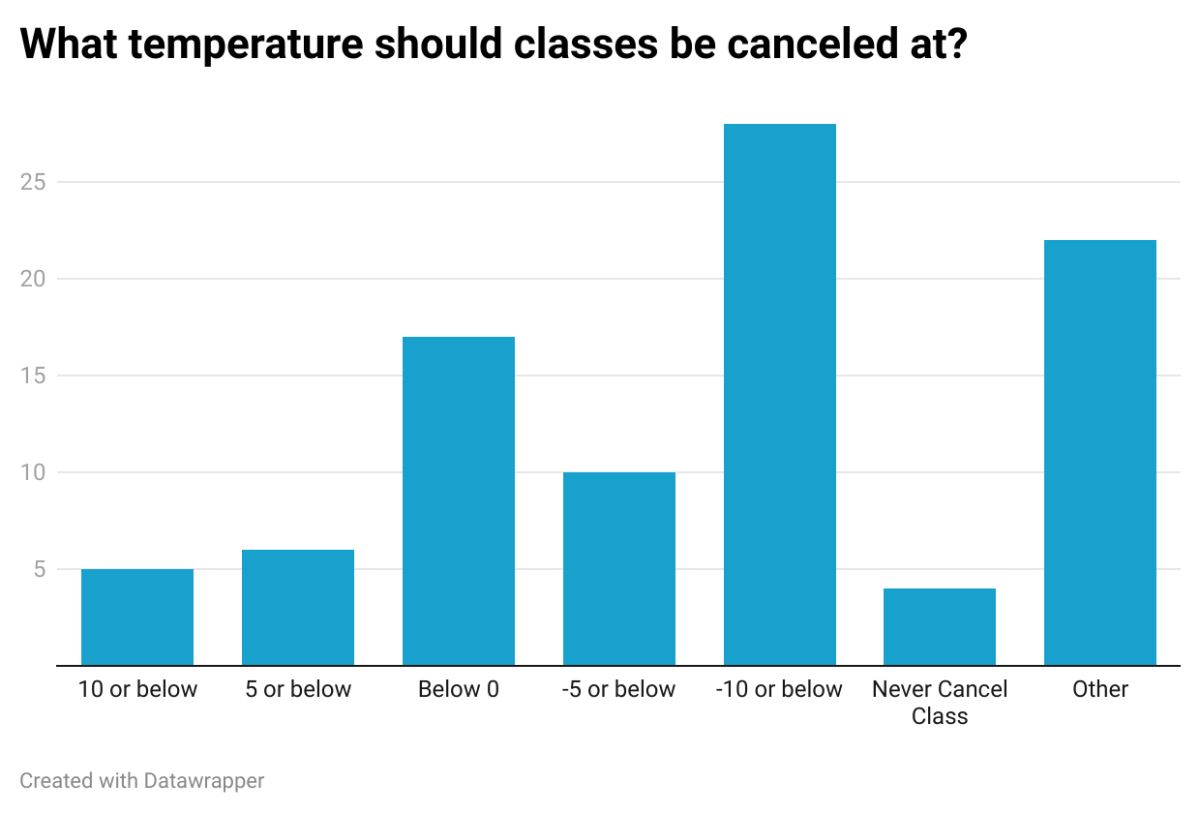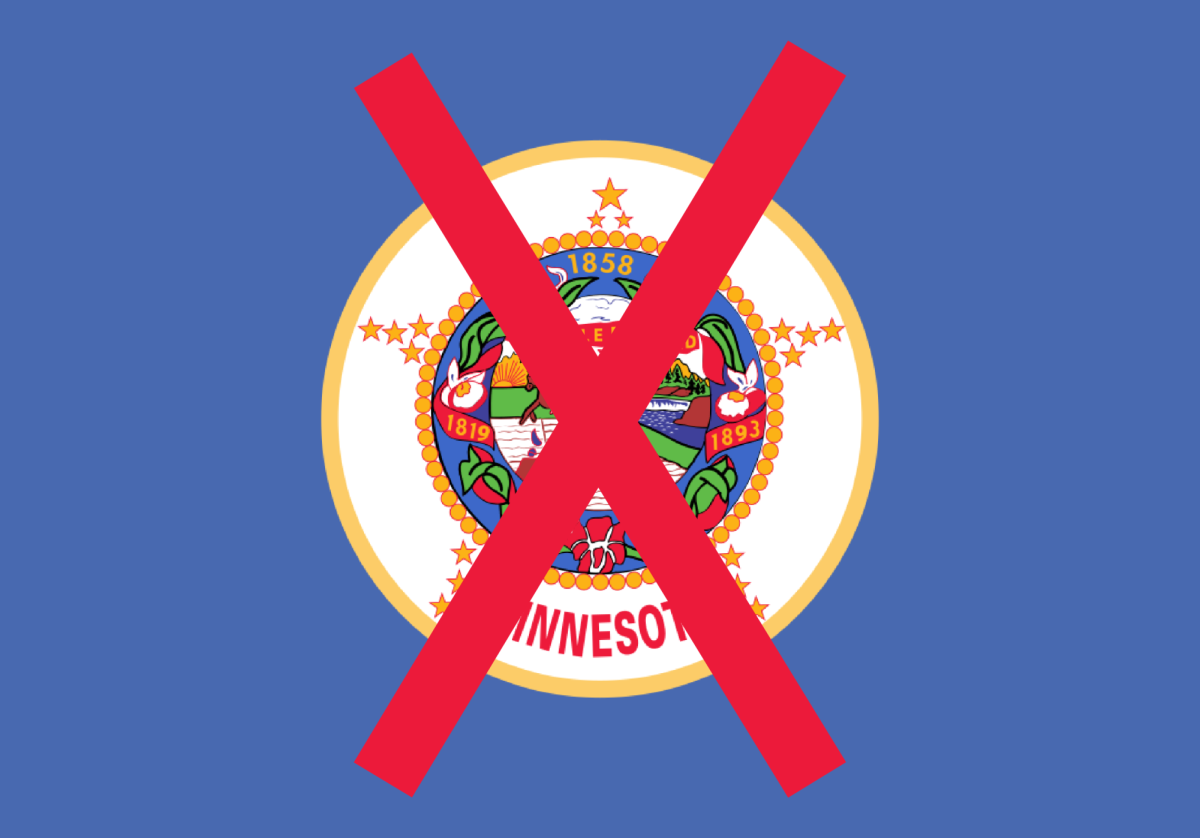Few topics are more contentious than safety and security at the University of Minnesota. In the heart of a city that is only a few years removed from the murder of George Floyd and videos of violence in Dinkytown always being a favorite topic of our mothers at the dinner table, the ire of suburbanites is drawn to the city known colloquially as “Murderapolis.”
With that in mind: what do the people who actually live here think?
In a reader survey, 34 subscribers to the Minnesota Daily newsletter ranked their satisfaction with the University’s approach to campus safety on a scale from zero to four. Results indicated 5.9% of respondents (two) ranked the University’s approach a zero, while 23.5% (8), 26.5% (9), 26.5% (9) and 17.7% (6) ranked the University’s approach a 1, 2, 3 and 4, respectively.
The mean score from the respondents was 2.5, implying the average respondent felt lukewarm about safety at the University.
We witnessed some disparity between the responses of students and staff with the average response of students being 2.05 and the average response of staff being 2.57. In fact, the two lowest scores (zero) were both from students. While both staff and student averages come in above the mean (two), why do staff feel significantly more satisfied with campus safety than students?
Among the students who ranked the University the lowest, the primary factor listed was a dissonance between the aims of campus safety and the actual actions taken.
“The U of M’s approach to ‘campus safety’ seems to be more about dishing out parking tickets in Dinkytown than protecting people,” said graduate student Emma Worthley.
Another criticism was whether the University was approaching campus safety from the perspective of serving students and staff or the parents paying tuition.
“Wasting money on turnstiles(pio) and more University of Minnesota Police Department (UMPD) isn’t really changing,” said Joey VanDeurzen, a fourth-year computer science major, referring to Pioneer Hal. “They need actual community engagement, not just biannual free donuts/coffee, so they can come up with a plan that engages the people that live, study and work on campus. Pleasing Facebook parents and suburban/rural legislators isn’t getting us anywhere.”
University Finance Operations Associate Kristie Mandel disagreed with this sentiment, citing “really quick response times and active threat training” as two functions of campus safety that go under-appreciated.
There is no question some parents out there harbor fears about sending their children off to scary Minneapolis schools. I have personally heard Dinkytown specifically referred to as a “lawless cesspool” many times from people after I tell them about my college of choice. Well, maybe not that specific, but they would have agreed with the sentiment at the very least.
But if the University is just so dangerous, why wasn’t the average score far lower? Surely a lawless, cesspool-esque hellscape such as ours would warrant far greater anger from its occupants, right?
First of all, I should admit that everyone who ranked the University anything below a 3 — roughly 56% of respondents — were either neutral to or directly critical of campus safety, a majority of whom represented the latter. This is to say: it certainly isn’t all sunshine and rainbows here.
Some students, of course, do view campus safety in a very positive light. Civil engineering fourth-year student Ian Mcphee gave the University the highest possible rating, his only note being that he wished “the portable lights in Dinkytown were powered by solar instead of gas generators.”
But, considering a majority of respondents were at least somewhat wary of campus safety, is the answer increasing police presence? Shannon Lee, a third-year communications major seems to think so, advocating for UMPD to more consistently have officers patrolling “24/7.” Tammy Hendrickson, an administrative consultant at the University, agreed, who said she was unaware of any answer other than to “increase security and enforcement.”
Obviously, others disagree.
“10,000 cops don’t make me feel safer,” said Pearl Elliott, a fourth-year environmental sciences, policy and management major. “Instead, it feels like there is a constant threat.”
The interesting thing about the question of increasing police presence on campus is that people who rank the University very low in terms of satisfaction had wildly different answers to this question. Elliott made it clear she did not believe that an increase in policing was the answer, arguing instead for “prevention through community building.”
On the other hand, graduate student Katelyn Stevens believes we should “support our officers and hire more officers.”
You may be thinking this issue has become muddy and unclear about what the right move for the University is going forward, and there seems to be a lot of dissonance even just among the 34 people surveyed. And you would be half right.
I propose a simple solution: make everyone a police officer. That way we have community-based policing, but we also have an increased police presence. Some may argue that if we are all cops, then no one is.
This is the only way to both increase and decrease police presence, so why not? Everybody, I solved crime!













